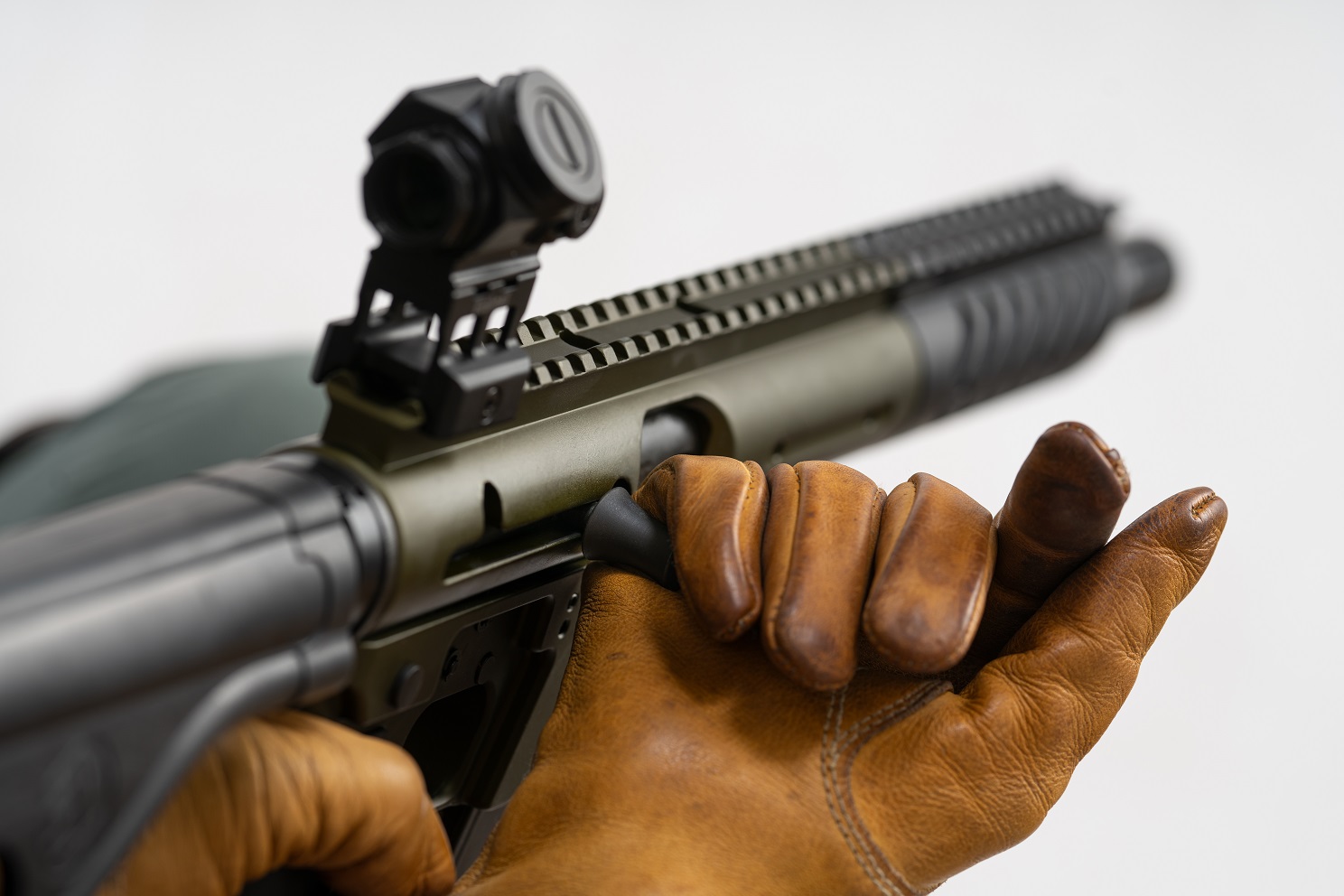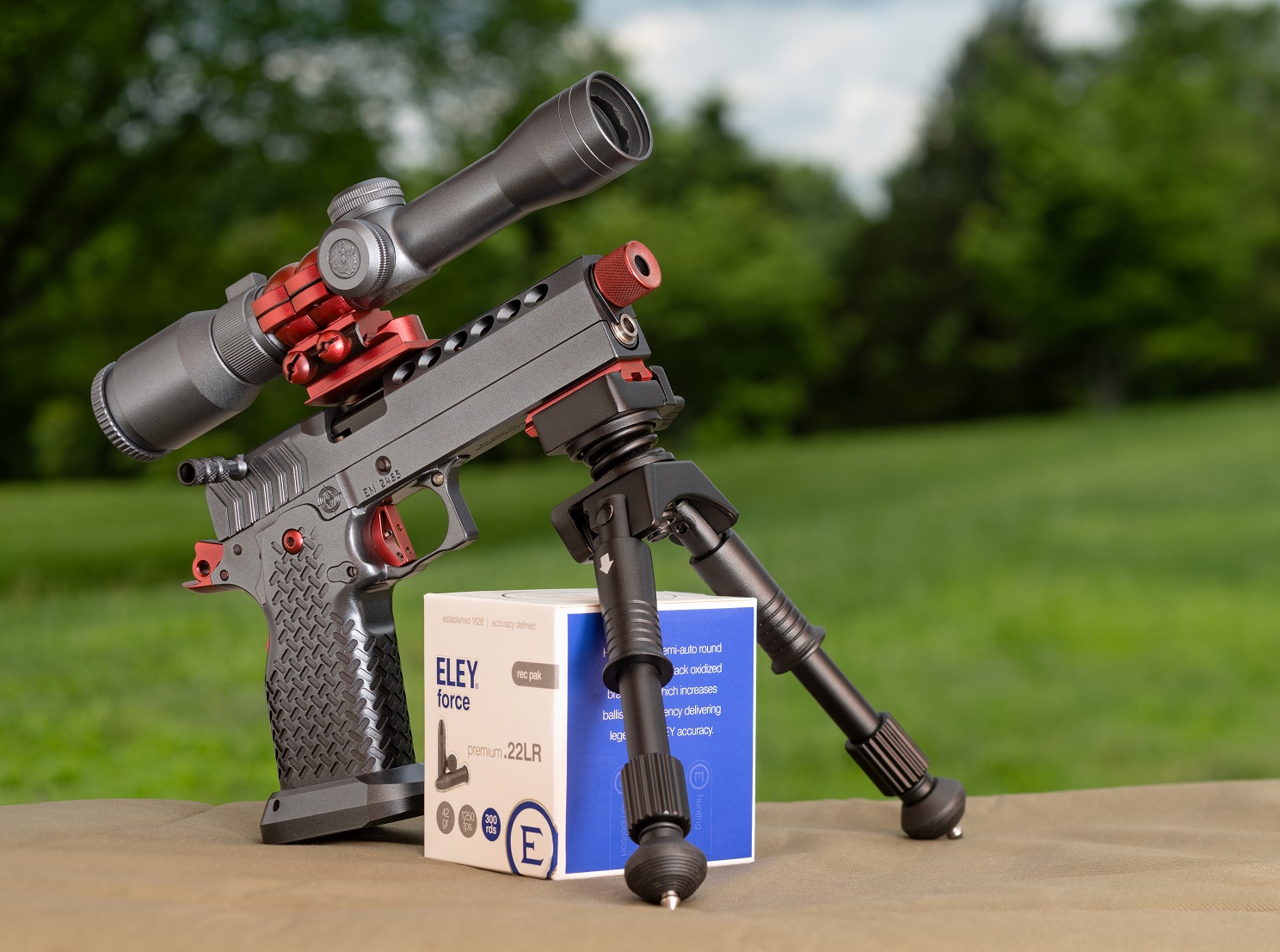The charging handle can be installed on the right only, while ejection can be from the left or the right.
By Oleg Volk
TNW Firearms offers a wide array of pistol caliber carbines and pistols, all based on the same in-line blowback action. The Aero Survival Rifles (ASR) and Pistols (ASP) are available in .45 ACP, 9mm, .40S&W, 10mm, .357SIG, .22LR and .460 Rowland. In the world where 9mm ammunition can be hard to get, it’s nice to have options: all of these share the same receiver and require only barrels, bolt heads, springs and sometimes a lower receiver to use a different cartridge. TNW Firearms’ rifles have 16.25-inch barrels and stocks, and their pistols have 10.25-inch barrels and braces, otherwise the two are very similar. The upper receiver is the serialized part. Bolt heads are marked with the caliber, the bolt body is common to all calibers.
At first glance, the Aero Survival pistol and carbine line looks like a modernization of the classic Sten submachine gun. They have a similar tubular receiver and forend, a quickly detachable barrel, a safety notch for the bolt handle and robust and simple construction. A closer look reveals considerable improvements on the Sten, like milled aluminum lower and upper receivers, well-radiused forms, threaded barrels and a full-length rail. The overbuild look and the availability of powerful .460 Rowland chambering bring Imperial bolters from Warhammer 40,000 universe to mind.
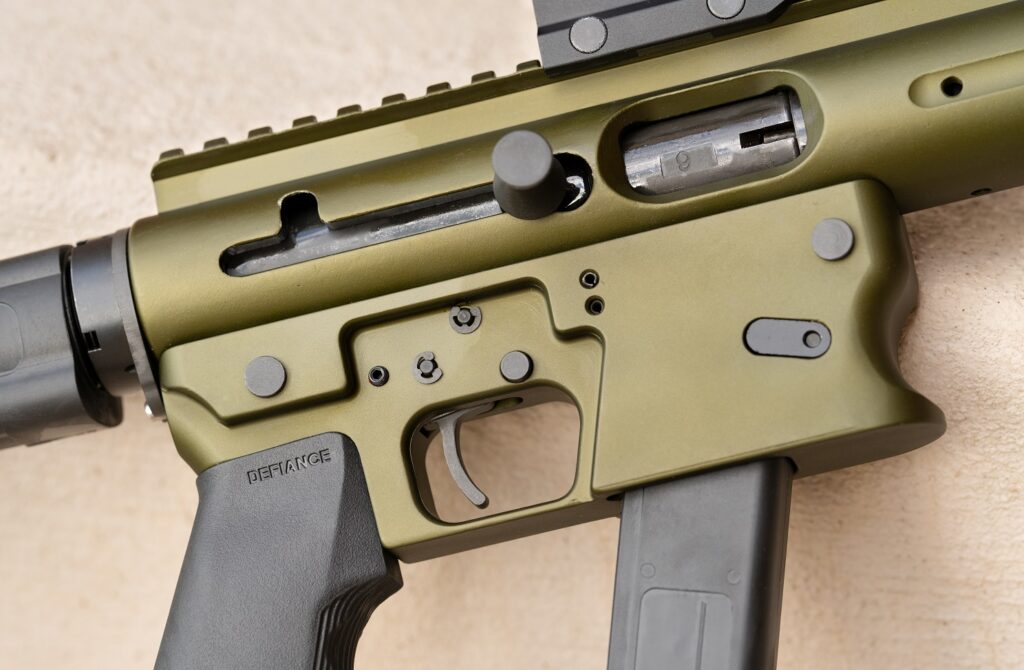
The Aero Survival Rifle and Pistol serve a variety of roles, such as self-defense, backpacking and small and large game hunting, and the barrels are designed to return to their established zero no matter the amount of removals and reinstalls. The 9mm pistol model this author tested came with a well-ventilated extended forend, helpful for a secure hold, an SB Tactical rubber brace and a 17-round magazine. All GLOCK magazines, including the 100-round BETA C-MAG®, work in this pistol.
Although the upper and lower resemble an AR-15 configuration, they differ considerably on the inside. Both the buffer tube plate and the ratcheted barrel nut use center locating pins for consistent reattachment. The barrel nut screws onto a coned thread, providing self-centering for the barrel. A tension adjustment screw at the top of the rail regulates the ratchet engagement. Disassembly is very simple. Two pins release the upper from the lower. A spring-loaded latch on the forend releases it from the upper; the threaded forend then spins off. The barrel nut, similar to those on Stens or Uzis, spins off to release the barrel forward. The bolt gets pushed back slightly to withdraw the charging handle, after which the bolt and its rigidly attached carrier slide forward out of the receiver.
One of the most obvious features of the ASR is the ejection ports on both sides of the receiver. Ejection direction can be changed by swapping the fixed blade ejector and the bolt stop in the lower. This feature is obviously vital for the comfort of left-handed users. Unfortunately, the weak-hand side opening allows gas and unburned powder bits to reach the shooter’s face, an issue that gets worse if a muzzle brake or a suppressor is attached to the threaded barrel. Fortunately, this issue is easily solved with a piece of electrical tape placed over the opening. The charging handle track is only on the right. There’s no automatic bolt hold-open, but the charging handle can be locked up into a slot.
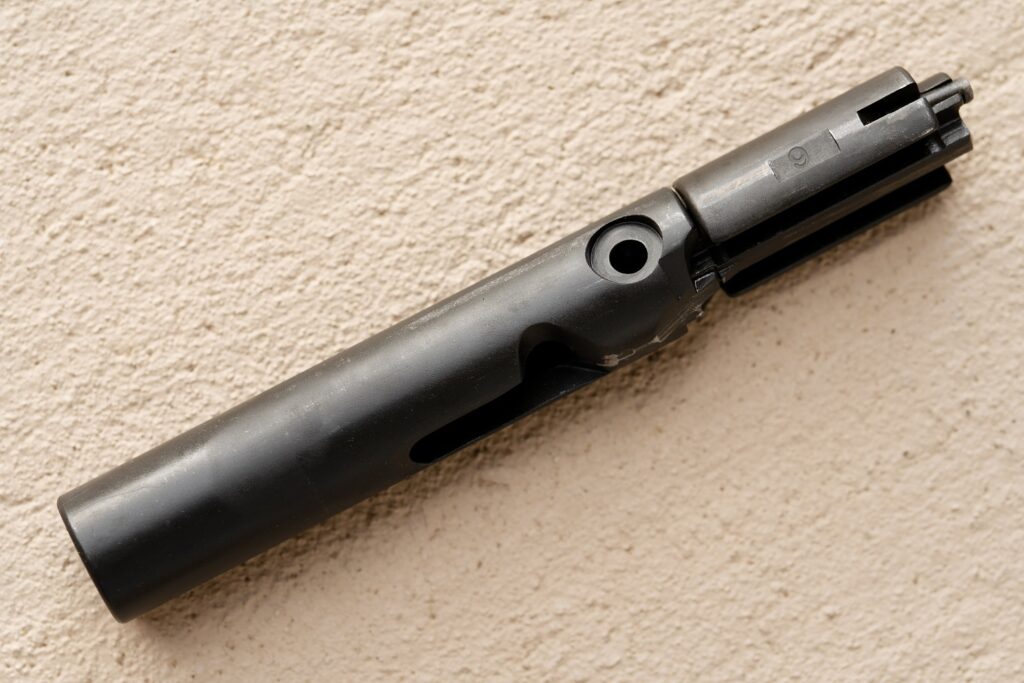
The push-through fenced safety is the only easily activated control on the gun. Everything else is made for those with strong hands. The cocking effort on the charging handle is about 25 pounds, which takes a real effort with the relatively small control surface. The un-fenced magazine release button is also strongly sprung against accidental activation. Magazines drop free, and reloading is also quick and easy. The trigger, nominally two-stage, has a gritty 8.5-pound pull. Despite the hefty recoil spring, felt recoil is noticeable for the mere 9mm.
While the extended forend provides a respectable iron sight radius, I wanted to try this gun with an optic. A Bushnell Lil P illuminated 1x prism red dot sight added minimal weight for the total of 6.5 pounds unloaded. Unlike most scopes, the Lil P is parallax-corrected for 50 yards instead of 100, just the thing for a PCC. The ASR proved completely reliable with all types of ammunition, from light ball to defense hollow points to heavy subsonics. GLOCK, ETS and Magpul magazines worked great, but 33-round SGM magazines did not work at all.
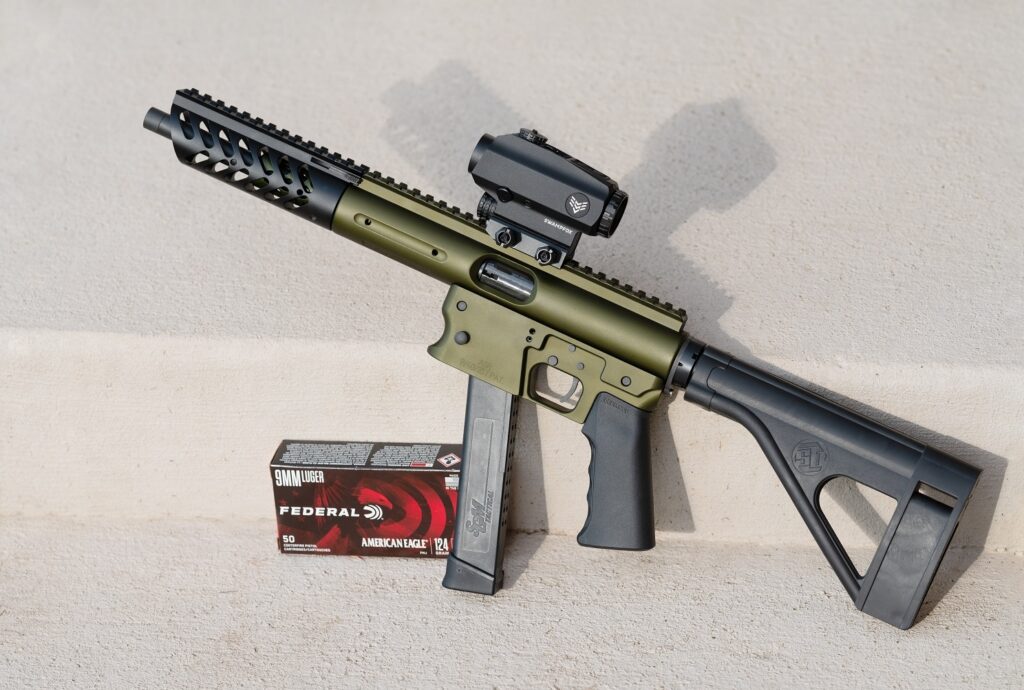
Accuracy was consistent across the various loads, suggesting that the limiting factor was the trigger. Typical spread was an inch at 25 yards, or about 4 MOA. Supported, this gun is sufficiently accurate for head shots past 100 yards, but the marksman has to employ good technique to effect that accuracy under field condition. Other ASR users have reported that the trigger can be improved considerably by polishing the working surfaces.
Despite the certain roughness, this pistol is fun to use. The solid heft of it inspired confidence that has been well-justified by the reliability experienced over several hundred rounds. The Lil P sight proved a good match, with just enough reticle complexity to allow drop compensation out to 150 yards. Between the 9x19mm cartridge limitations and the trigger, that’s the furthest realistic range for the weapon. The vast modularity of the TNW system is a great advantage in the current climate of logistical uncertainty.
| This article first appeared in Small Arms Review V24N10 (December 2020) |



